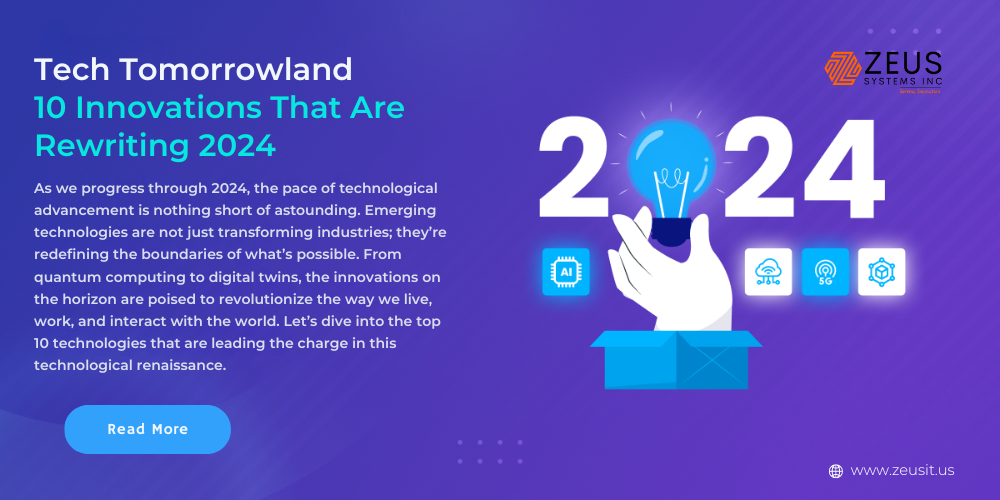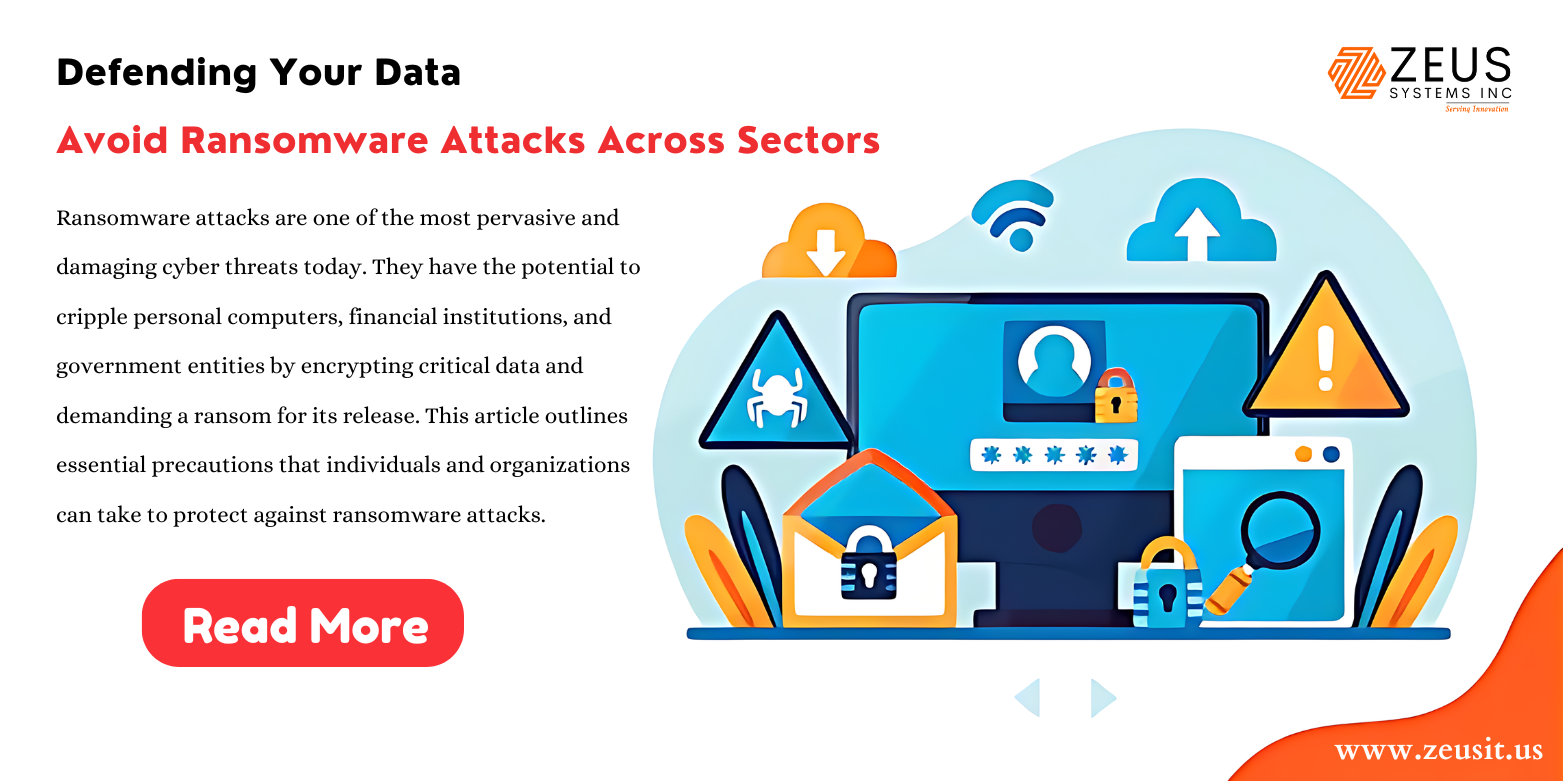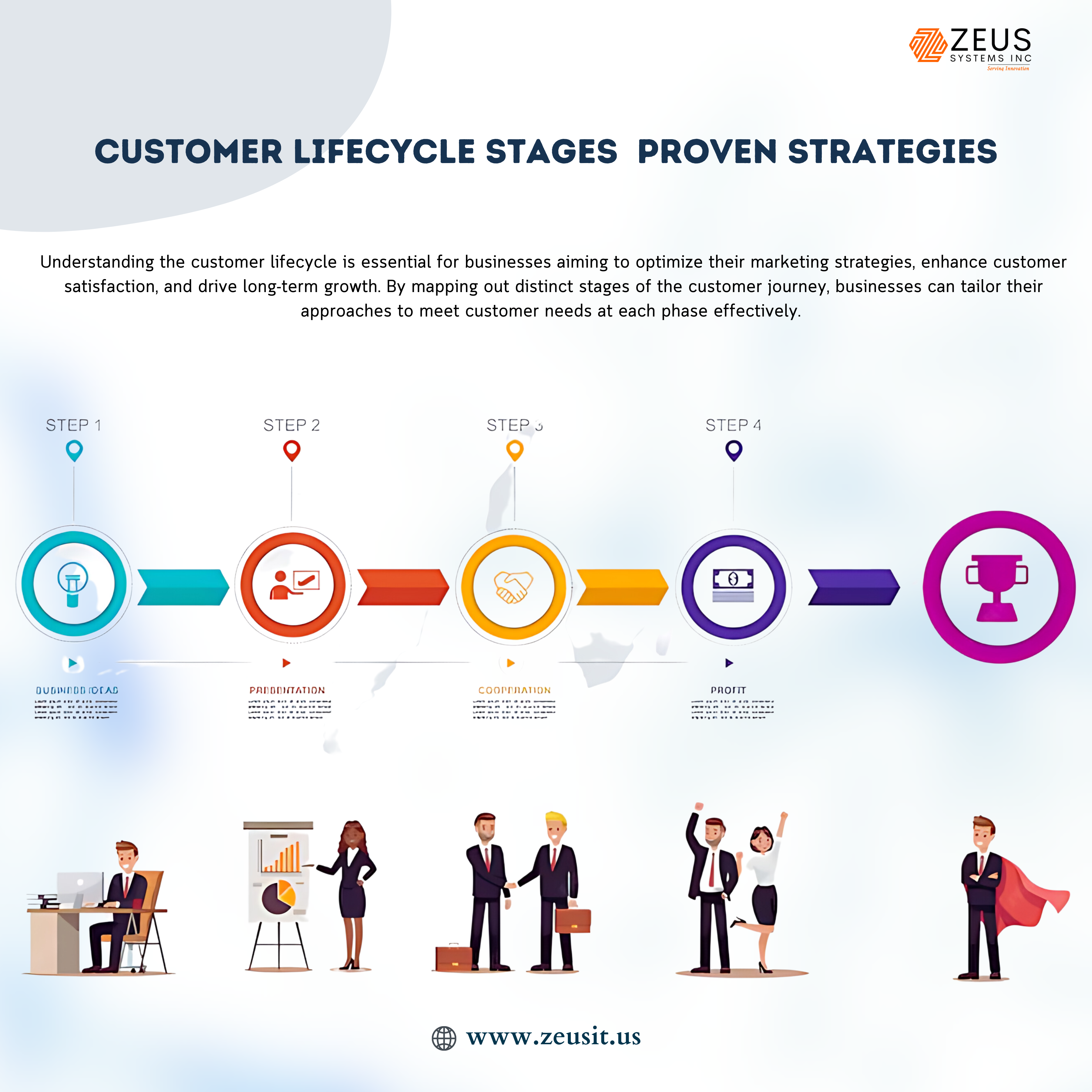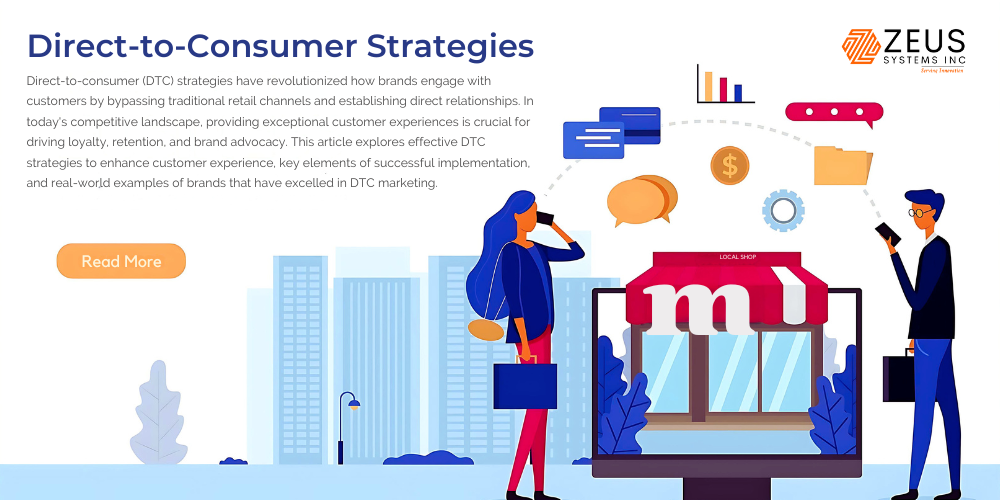As we progress through 2024, the pace of technological advancement is nothing short of astounding. Emerging technologies are not just transforming industries; they’re redefining the boundaries of what’s possible. From quantum computing to digital twins, the innovations on the horizon are poised to revolutionize the way we live, work, and interact with the world. Let’s dive into the top 10 technologies that are leading the charge in this technological renaissance.
1. Quantum Computing: The Quantum Leap
Quantum computing is transitioning from science fiction to reality, promising to solve problems that are beyond the reach of classical computers. Unlike traditional computers, which process information in bits, quantum computers use qubits, allowing them to perform complex calculations exponentially faster. Companies like IBM and Google are pioneering this space, with IBM’s Osprey quantum processor hitting a record 433 qubits in 2023. The implications for fields such as cryptography, drug discovery, and financial modeling are enormous, as quantum computing could perform tasks in minutes that would take classical computers thousands of years.
2. Artificial General Intelligence (AGI): The Rise of Conscious Machines
Artificial General Intelligence (AGI) represents a new frontier in AI, where machines not only perform specific tasks but also possess the ability to understand, learn, and apply knowledge across a wide range of domains—much like a human. While today’s AI systems excel in narrow applications, AGI aims to bridge the gap, enabling machines to reason, plan, and solve problems with human-like cognitive abilities. This evolution is not without its challenges, including ethical considerations and the potential for unintended consequences, as highlighted by the Future of Life Institute. Nonetheless, AGI’s potential to transform industries like healthcare, finance, and education is undeniable.
3. 5G-Advanced and 6G: The Next Generation of Connectivity
While 5G is still being rolled out globally, researchers and industry leaders are already setting their sights on 5G-Advanced and the next leap, 6G. These technologies promise not just faster internet speeds but a new paradigm in connectivity, with ultra-low latency and massive device connections. According to Ericsson, 5G-Advanced will enhance current 5G networks with more sophisticated features like advanced machine learning algorithms and AI-driven resource management. Meanwhile, 6G is expected to offer mind-boggling data rates, potentially up to 100 times faster than 5G, enabling immersive virtual reality experiences, real-time holographic communications, and advanced IoT applications.
4. Synthetic Biology: Engineering Life from the Ground Up
Synthetic biology is pushing the boundaries of what we can create with biotechnology, allowing scientists to design and build new biological parts, systems, and even entirely synthetic organisms. This field is set to revolutionize industries such as agriculture, where genetically engineered crops could withstand extreme climates, and medicine, where personalized treatments and synthetic organs could become commonplace. The National Institutes of Health emphasize that synthetic biology’s ability to program life at the molecular level is paving the way for breakthroughs in everything from sustainable biofuels to environmental conservation.
5. Space-Based Solar Power (SBSP): Beaming the Sun’s Energy to Earth
Space-based solar power is no longer just a sci-fi dream—it’s on the cusp of becoming a reality. By placing solar panels in orbit, energy can be collected continuously and beamed back to Earth, offering a constant supply of renewable energy without the limitations of weather or daylight. NASA is at the forefront of this research, exploring the feasibility of wireless power transmission from space to Earth, which could provide a revolutionary solution to our energy needs. As climate change drives the search for sustainable energy sources, SBSP could emerge as a game-changer in the global energy landscape.
6. Brain-Computer Interfaces (BCIs): Merging Mind and Machine
Imagine controlling your computer or smartphone with just a thought. Brain-Computer Interfaces (BCIs) are making this a reality, allowing for direct communication between the brain and external devices. These interfaces have profound implications for individuals with disabilities, offering new ways to interact with the world, and for the general population, potentially enhancing cognitive abilities. Companies like Neuralink, founded by Elon Musk, are developing BCIs that could eventually allow humans to upload and download thoughts, memories, and skills directly to and from the brain. The potential applications are vast, from treating neurological disorders to creating new forms of human-computer interaction.
7. Hydrogen Fuel Cells: The Future of Clean Energy
As the world seeks to reduce its carbon footprint, hydrogen fuel cells are emerging as a crucial technology for achieving carbon neutrality. These cells generate electricity by combining hydrogen and oxygen, producing only water as a byproduct. The International Energy Agency reports that advances in hydrogen production, storage, and distribution are making this technology more viable for widespread use, particularly in transportation and energy generation. Hydrogen-powered vehicles, for instance, offer a cleaner alternative to fossil fuels, while large-scale hydrogen plants could help decarbonize industrial processes.
8. Solid-State Batteries: Powering the Electric Future
Solid-state batteries represent a significant leap forward in energy storage technology. Unlike traditional lithium-ion batteries, solid-state batteries use a solid electrolyte, which offers higher energy densities, faster charging times, and improved safety. These benefits make them ideal for electric vehicles (EVs), where the need for longer range, shorter charging times, and safer operation is paramount. According to MIT Technology Review, solid-state batteries could address many of the current limitations in battery technology, potentially transforming the EV market and portable electronics industry.
9. Advanced Materials: Shaping the Future of Everything
From graphene to nanomaterials, advanced materials are unlocking new possibilities in technology and industry. These materials exhibit extraordinary properties—such as high strength, flexibility, and conductivity—that are being harnessed in next-generation electronics, medical devices, and renewable energy solutions. The Advanced Materials Journal highlights how these innovations are not just improving existing products but also enabling entirely new applications, such as ultra-lightweight aircraft and flexible, wearable electronics.
10. Digital Twins: The Virtual Mirror of Reality
Digital twins are digital replicas of physical objects or systems, enabling real-time monitoring, analysis, and optimization. This technology is becoming increasingly sophisticated, with applications ranging from manufacturing to urban planning. For instance, in manufacturing, digital twins can simulate production processes, allowing for predictive maintenance and performance optimization before issues arise. The Digital Twin Consortium notes that as digital twins become more integrated with AI and IoT, their ability to transform industries by creating more efficient, sustainable systems is expanding rapidly.
Conclusion
As we navigate through 2024, these emerging technologies are not just reshaping industries; they’re redefining our world. From the quantum leaps in computing to the merging of mind and machine, the innovations of today are setting the stage for the transformative changes of tomorrow. While the opportunities are immense, so are the challenges, particularly around ethical considerations and sustainability. Staying informed and proactive will be key to harnessing the full potential of these technologies as they continue to evolve.
References
- IBM Research. (2024). Quantum Computing: Next Steps in Scaling Qubits. Retrieved from IBM Research.
- Future of Life Institute. (2024). The Quest for Artificial General Intelligence: Progress and Challenges. Retrieved from Future of Life Institute.
- Ericsson. (2024). 5G-Advanced and the Road to 6G: What’s Next? Retrieved from Ericsson.
- National Institutes of Health. (2024). Synthetic Biology: Engineering Life for the Future. Retrieved from NIH.
- NASA. (2024). Space-Based Solar Power: Turning Sunlight into Clean Energy. Retrieved from NASA.
- Neuralink. (2024). Advancing Brain-Computer Interfaces: The Future of Human-Machine Interaction. Retrieved from Neuralink.
- International Energy Agency. (2024). The Role of Hydrogen in a Clean Energy Future. Retrieved from IEA.
- MIT Technology Review. (2024). Solid-State Batteries: Powering the Next Generation of EVs. Retrieved from MIT Technology Review.
- Advanced Materials Journal. (2024). Exploring the Frontiers of Advanced Materials. Retrieved from Advanced Materials Journal.
- Digital Twin Consortium. (2024). Digital Twins: Transforming the Future of Industries. Retrieved from Digital Twin Consortium.










